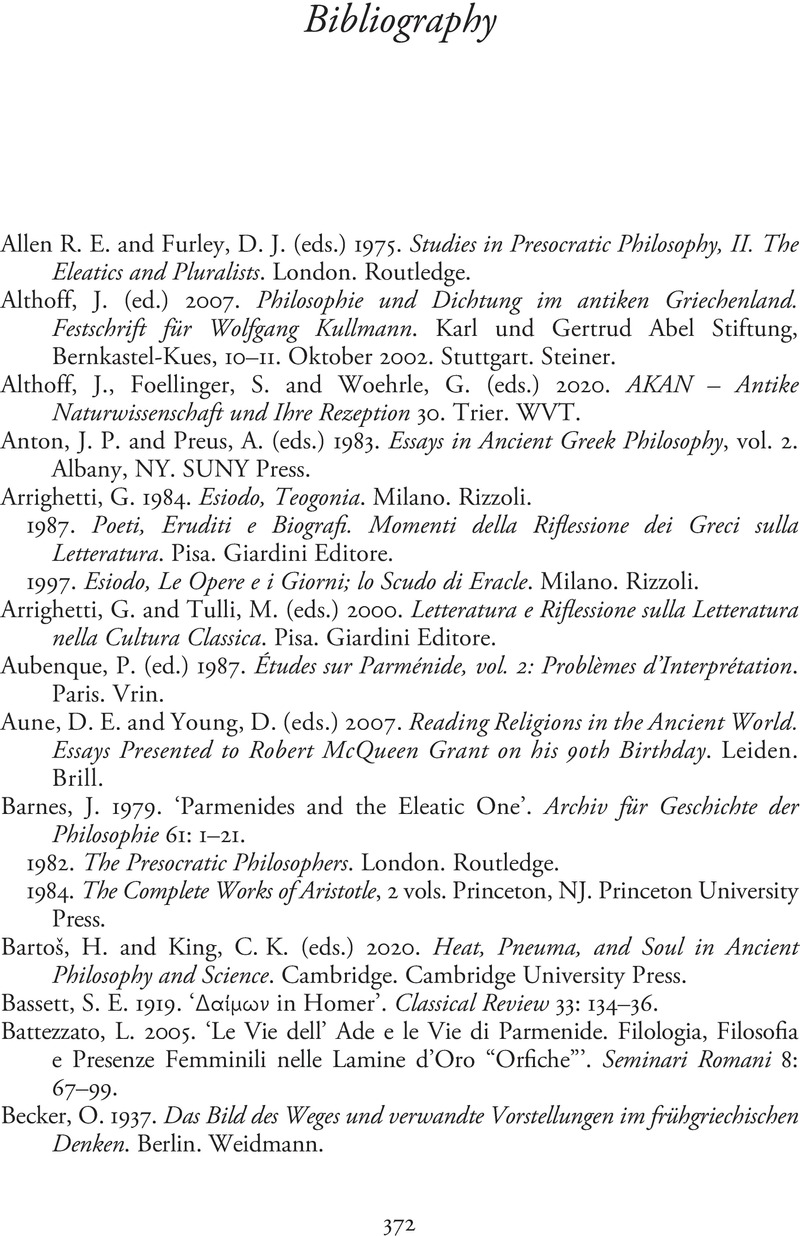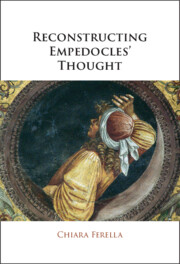Book contents
- Reconstructing Empedocles’ Thought
- Reconstructing Empedocles’ Thought
- Copyright page
- Dedication
- Contents
- Acknowledgements
- Introduction
- Chapter 1 Reconstructing Empedocles’ On Nature
- Chapter 2 The Proem to On Nature
- Chapter 3 Daimones between Plato and Pythagoras
- Chapter 4 Divine Beings
- Chapter 5 Changes of Form, Personal Survival and Rebirth
- Chapter 6 Knowing Nature as a God
- Chapter 7 Cosmic Cycle, Moral Import and Rebirth
- Chapter 8 Epilogue
- Bibliography
- Index
- References
Bibliography
Published online by Cambridge University Press: 01 February 2024
- Reconstructing Empedocles’ Thought
- Reconstructing Empedocles’ Thought
- Copyright page
- Dedication
- Contents
- Acknowledgements
- Introduction
- Chapter 1 Reconstructing Empedocles’ On Nature
- Chapter 2 The Proem to On Nature
- Chapter 3 Daimones between Plato and Pythagoras
- Chapter 4 Divine Beings
- Chapter 5 Changes of Form, Personal Survival and Rebirth
- Chapter 6 Knowing Nature as a God
- Chapter 7 Cosmic Cycle, Moral Import and Rebirth
- Chapter 8 Epilogue
- Bibliography
- Index
- References
Summary

- Type
- Chapter
- Information
- Reconstructing Empedocles' Thought , pp. 372 - 395Publisher: Cambridge University PressPrint publication year: 2024

